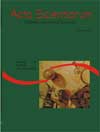<b>Nietzsche and the beatitude of the practical evangelical as sign of the immanence</b> - DOI: 10.4025/actascihumansoc.v31i1.6065
Keywords:
Jesus, amor fati, ‘idiot’, amorality, Christic axiology
Abstract
This text focuses on the analysis of Nietzsche concerning the idea of beatitude as presented in The Antichrist, and how this religious experience is based on an immanent axiology. Certainly the most surprising element of this perspective lies in the fact that Nietzsche, a philosopher contrary to the axiological parameters of instituted Christian morality, evidences the presence of affirmative and jubilant elements in the gospel practice of Jesus, a ‘free spirit’. Nietzsche interprets the idea of ‘Kingdom of Heaven’ as an experience of the heart, a state of beatitude resulting from the understanding of the effective unit between man and the divine, devoid of any moral determination. Moreover, as detected by Nietzsche, the idea of pain in the originating Christic existence, instead of combining with a depreciation of existence as done by Christian morality, actually represents its more significant approval. Under these circumstances, the ‘Christian’ dogma is based on an anti-Christic valuation – a situation that, along with Nietzschian writing, we propose as the theme of this writing.Downloads
Download data is not yet available.
Published
2009-06-16
How to Cite
Bittencourt, R. N. (2009). <b>Nietzsche and the beatitude of the practical evangelical as sign of the immanence</b> - DOI: 10.4025/actascihumansoc.v31i1.6065. Acta Scientiarum. Human and Social Sciences, 31(1), 97-105. https://doi.org/10.4025/actascihumansoc.v31i1.6065
Issue
Section
History and Philosophy
DECLARATION OF ORIGINALITY AND COPYRIGHTS
I Declare that current article is original and has not been submitted for publication, in part or in whole, to any other national or international journal.
The copyrights belong exclusively to the authors. Published content is licensed under Creative Commons Attribution 4.0 (CC BY 4.0) guidelines, which allows sharing (copy and distribution of the material in any medium or format) and adaptation (remix, transform, and build upon the material) for any purpose, even commercially, under the terms of attribution.
Read this link for further information on how to use CC BY 4.0 properly.























